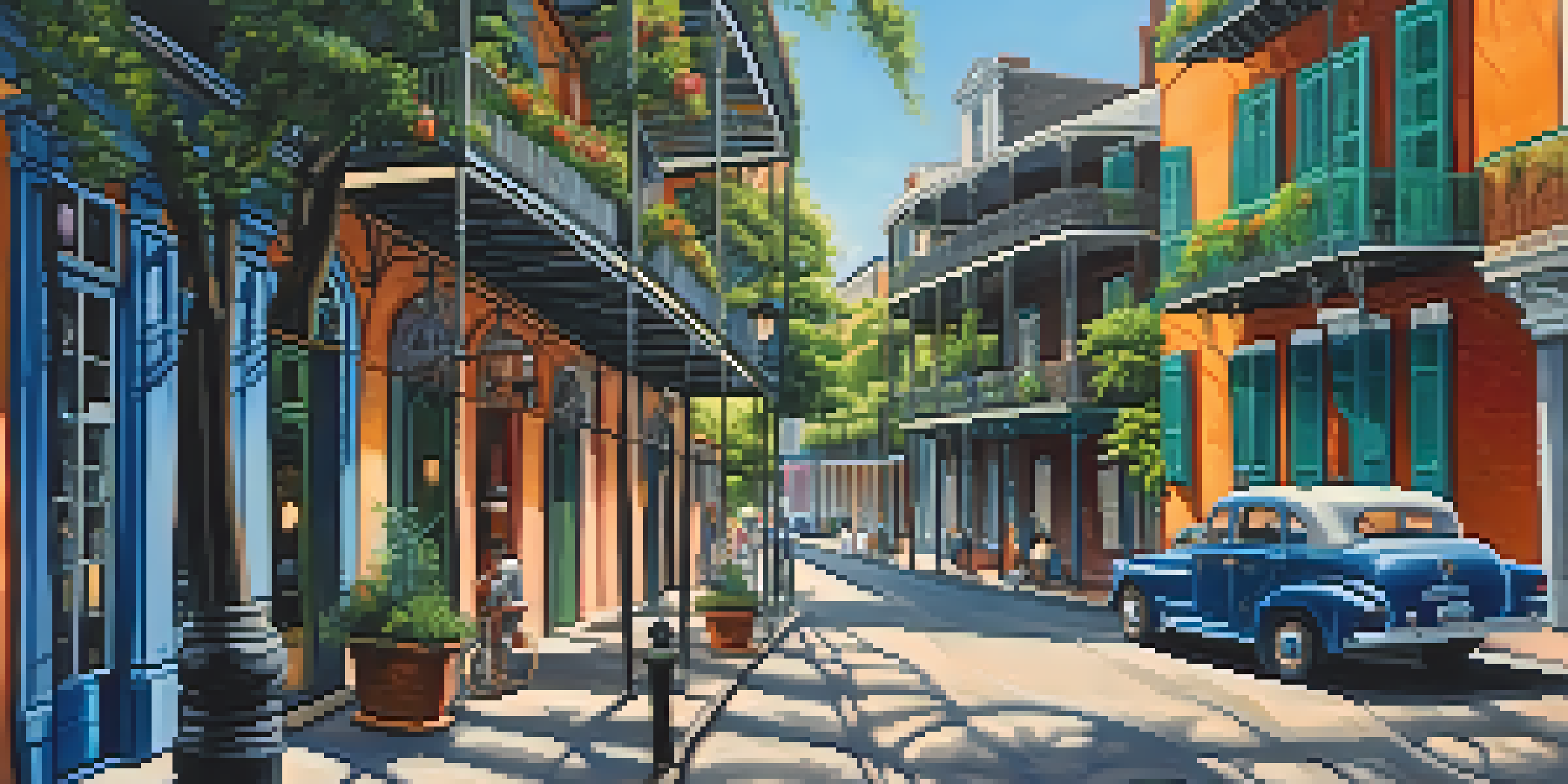New Orleans' Historic Districts: A Study of Architectural Styles

Introduction to New Orleans' Rich Architectural Heritage
New Orleans is a treasure trove of architectural beauty, known for its diverse styles that tell the story of its cultural evolution. From the French colonial influences to the vibrant Creole cottages, each structure has a tale to tell. The city's historic districts are a living museum, showcasing how various cultures have melded together over centuries. This exploration will guide you through these enchanting neighborhoods and their unique architectural identities.
The French Quarter: A Blend of Cultures and Styles
The French Quarter, or Vieux Carré, is perhaps the most iconic of New Orleans' historic districts. Its architecture features a mix of Spanish, French, and Creole influences, creating a vibrant tapestry of colors and designs. The famous wrought-iron balconies and lush courtyards invite you to step back in time and experience the city's lively spirit. As you wander through its narrow streets, you can almost hear the echoes of jazz music and the laughter of locals.
Diverse Architectural Styles
New Orleans boasts a rich architectural heritage reflecting its cultural evolution, with influences from French, Spanish, African American, and Creole traditions.
Garden District: Antebellum Elegance and Southern Charm
Just a short streetcar ride from the French Quarter lies the Garden District, known for its magnificent antebellum mansions. Here, you’ll find grand columns and sprawling porches that embody Southern elegance. The district boasts a wealth of architectural styles, including Greek Revival and Italianate, each home a testament to the opulence of the past. Strolling through this picturesque neighborhood feels like stepping into a classic Southern novel.
Treme: The Heartbeat of African American Culture
Treme, one of the oldest African American neighborhoods in the United States, is rich in history and culture. The architecture here reflects the resilience and creativity of its residents, with shotgun houses and Creole cottages lining the streets. This district is not just about buildings; it represents a deep cultural heritage, including music, food, and festivals. Visiting Treme offers a unique glimpse into the soul of New Orleans and its vibrant community.
Historic Districts Tell Stories
Each historic district in New Orleans, from the French Quarter to the Garden District, showcases unique architectural identities that narrate the city’s vibrant history.
Bywater: Artistic Flair Meets Historic Charm
Bywater is an eclectic neighborhood that blends historic architecture with a vibrant arts scene. The colorful shotgun houses and unique murals create a lively atmosphere that attracts artists and creatives. This area showcases the adaptive reuse of buildings, where old warehouses have been transformed into galleries and studios. Bywater embodies the spirit of innovation while honoring its historical roots, making it a must-visit for anyone exploring the city.
Marigny: A Musical and Architectural Melting Pot
Adjacent to the French Quarter, the Marigny neighborhood is renowned for its lively music scene and charming architecture. The area is dotted with historic homes that feature vibrant colors and intricate details, making it visually captivating. Known for its live music venues, Marigny resonates with the sounds of jazz and funk, creating an atmosphere of celebration. Here, architecture and culture intersect, making it a hub for locals and visitors alike.
Cultural Significance of Neighborhoods
Neighborhoods like Treme and Bywater not only highlight architectural diversity but also embody the cultural heartbeat of New Orleans through music, art, and community.
Irish Channel: A Blend of Historic and Modern Styles
The Irish Channel neighborhood showcases a fascinating blend of historic and contemporary architecture. Once home to Irish immigrants, this area has evolved while preserving its rich heritage. You'll find classic double-gallery homes alongside modern townhouses, reflecting the community’s growth. This juxtaposition of styles represents the ever-changing face of New Orleans, where history and innovation coexist harmoniously.
Conclusion: Embracing New Orleans' Architectural Legacy
New Orleans' historic districts offer a captivating journey through time, showcasing a variety of architectural styles. From the lively streets of the French Quarter to the serene beauty of the Garden District, each neighborhood has its unique charm. These districts are not just about the buildings; they embody the spirit and culture of a city that celebrates its history. As you explore, let the architecture tell you the stories of the people who have shaped New Orleans into the vibrant city it is today.